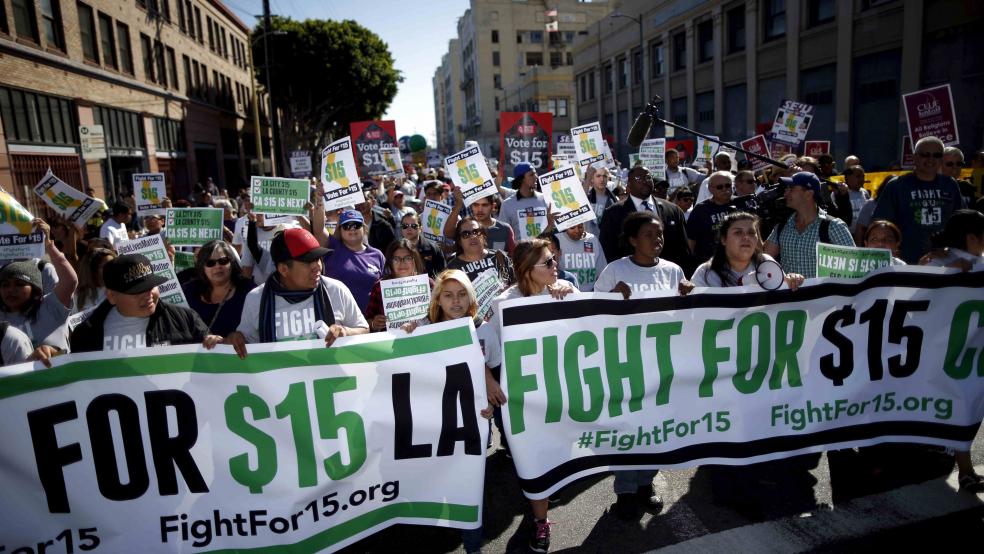In a less cynical age, the Supreme Court Justice Louis Brandeis wrote that each of the 50 states that make up the U.S., "may, if its citizens choose, serve as a laboratory; and try novel social and economic experiments without risk to the rest of the country.” These days, any reference to states as the “laboratories of Democracy” is as likely as not to be ironic — just Google the phrase plus the word “Kansas” if you need evidence.
But every now and then, a state takes a huge policy risk — Massachusetts under Mitt Romney’s governorship comes to mind, when the state instituted an individual mandate for health insurance as part of a plan to achieve universal health insurance coverage — with outcomes that produce far-reaching effects for the rest of the country.
Related: The End of the Jobs Crisis May Finally Be in Sight
On Monday, New York and California both embarked on an experiment that could go a long way toward settling questions about how the country’s lowest-paid workers should be treated. The two states, on the same day, enacted laws that will raise the minimum wage to $15 per hour.
This will create what social scientists call a “natural experiment” that will be used to try to settle longstanding arguments about the effects of mandating wage increases for low-paid workers. Economists will be able to compare multiple cities, counties and regions within two relatively large states with similar areas nearby in states that did not raise the minimum wage.
If jobs disappear from Binghamton, New York while remaining steady in Scranton, Pennsylvania, there will be a strong argument that mandated wage increases are damaging to the economy. If employment levels in Blythe, California and Ehrenberg, Arizona don’t deviate much after the change, it will support the claim that minimum wage increases don’t make a big difference to employment levels.
There is already precedent for similar changes resulting in key research on the minimum wage question. Economists Alan Krueger and David Card authored a pair of groundbreaking studies after New Jersey raised its minimum wage in 1992. Their study, published in 1994, found that employment in fast food restaurants in the state actually increased after the wage hike when compared with employment in seven bordering counties in Pennsylvania.
Related: The US Economy Has Stalled, Again
A follow-up study conducted using a larger data set several years later confirmed the finding.
The Krueger-Card studies didn’t settle the question of the impact of wage hikes on employment. As recently as 2014, the Congressional Budget Office issued a report estimating that a proposed nationwide hike to $10.10 would lift millions of workers out of poverty but cost the country the equivalent of 500,000 “full-time equivalent” jobs.
The changes in New York and California, both large and populous states, will be even more revealing about present-day effects of minimum wage increases than a 25-year-old case in New Jersey. They offer the opportunity to study the impact on two of the largest metropolitan areas in the country as well as poor, rural areas far removed from the economic mainstream.
Somewhere, Justice Brandeis is smiling.





